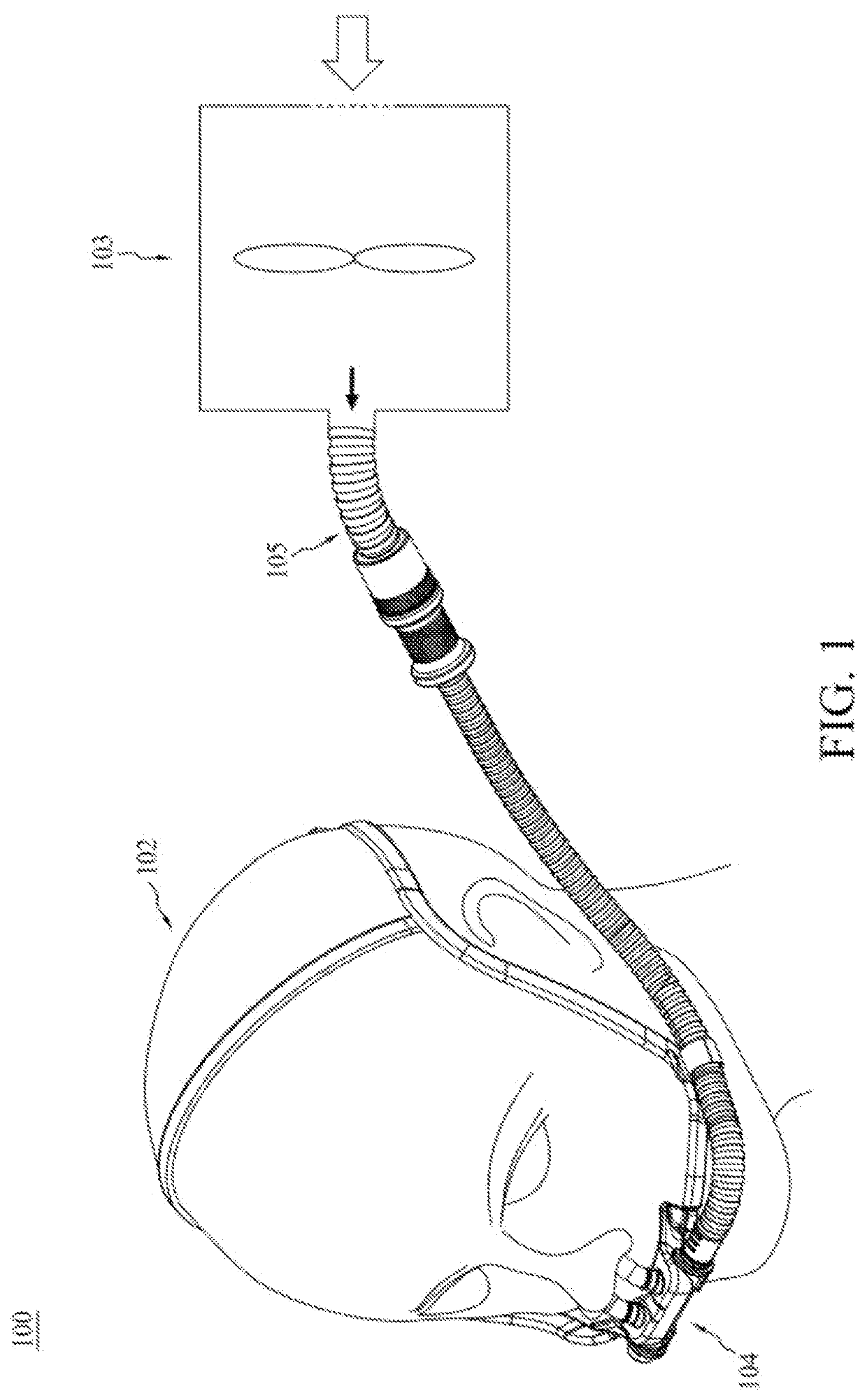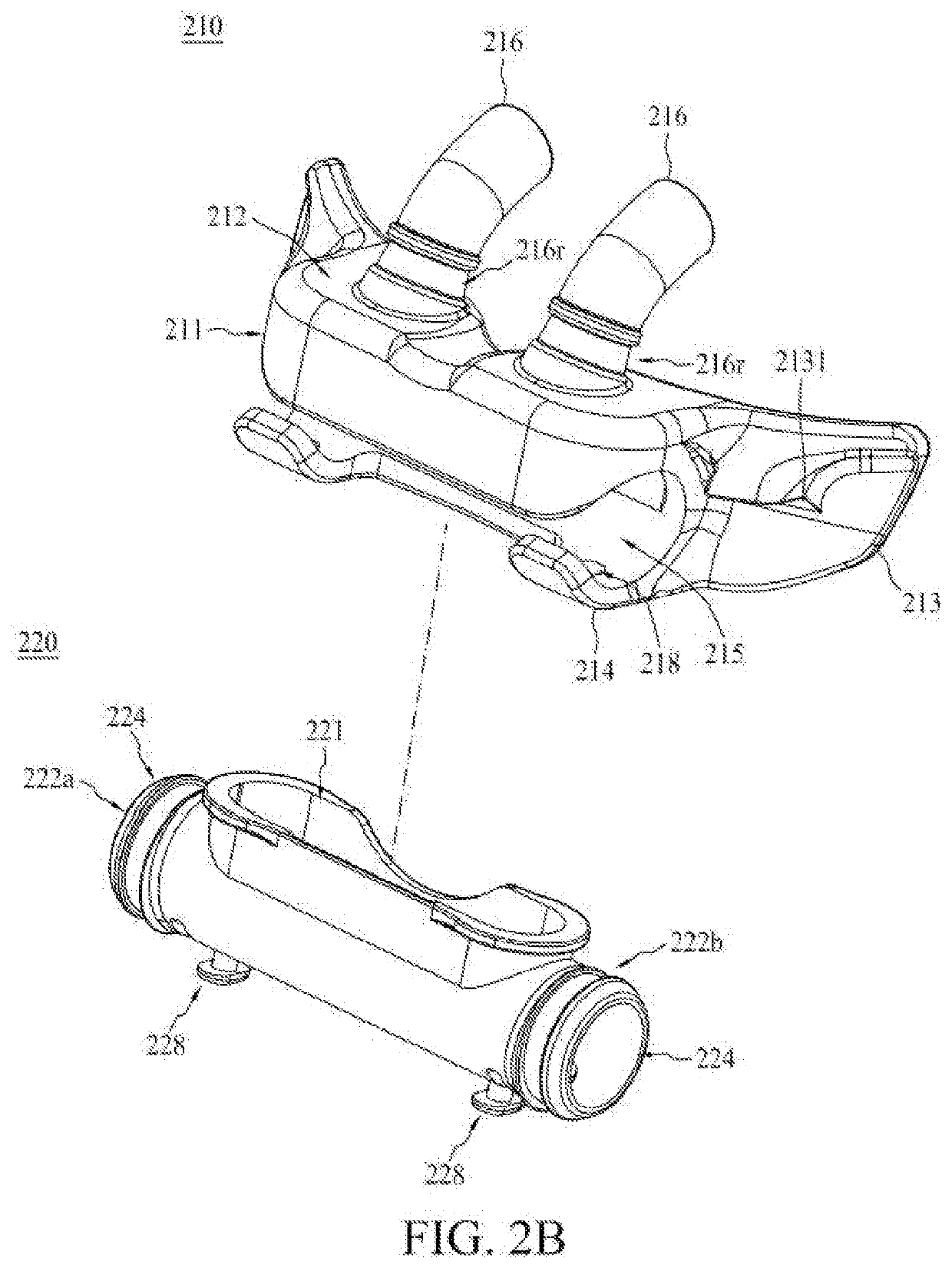Nasal cannula device
- Summary
- Abstract
- Description
- Claims
- Application Information
AI Technical Summary
Benefits of technology
Problems solved by technology
Method used
Image
Examples
Embodiment Construction
[0057]Detailed descriptions and technical contents of the present disclosure are illustrated below in conjunction with the accompanying drawings. However, it is to be understood that the descriptions and the accompanying drawings disclosed herein are merely illustrative and exemplary and not intended to limit the scope of the present disclosure.
[0058]1. Respiratory System
[0059]FIG. 1 is a schematic diagram of a respiratory system 100 for providing a stream of respiratory gas to a user 102 during respiratory therapy. The respiratory system 100 typically includes at least, a gas supply unit 103, a nasal cannula device 104, and a supply conduit 105, in which the supply conduit 105 is connected to the gas supply unit 103 at one end and to the nasal cannula device 104 at the other end. When in use, the gas supply unit 103 may provide a stream of gas (e.g., oxygen or air) at a pre-determined pressure, flow rate and / or humidity to the user 102 with the aid of the nasal cannula device 104, ...
PUM
 Login to View More
Login to View More Abstract
Description
Claims
Application Information
 Login to View More
Login to View More - R&D
- Intellectual Property
- Life Sciences
- Materials
- Tech Scout
- Unparalleled Data Quality
- Higher Quality Content
- 60% Fewer Hallucinations
Browse by: Latest US Patents, China's latest patents, Technical Efficacy Thesaurus, Application Domain, Technology Topic, Popular Technical Reports.
© 2025 PatSnap. All rights reserved.Legal|Privacy policy|Modern Slavery Act Transparency Statement|Sitemap|About US| Contact US: help@patsnap.com



